- Home
- Brian Hodge
Picking the Bones Page 13
Picking the Bones Read online
Page 13
“I have two secretaries with me, trying to find anyone who might have known him personally, but this is no easy task. He died an old man and outlived many of his friends, maybe most of them…and that was half a century ago. Still,” says Frederic, “you do recognize his genius?”
“Not to worry.” Abraham claps him on the shoulder. “I declare it almost as emphatically as my own.”
“Then I think you’ll soon agree that such genius did not come without its price.” Frederic rises to his feet. “Come, let me show you.”
Francisco Goya has been dead for some forty-five years. It was nine years before that, in 1819, that he set up house here after a long, successful career as a painter not only to the royal families of Spain, but of the commonest folk sweating in the fields and streets.
With Goya already past seventy, it would’ve been reasonable to expect that he might have lived out his days here. But four years later, Spain’s affairs of state took their latest in a series of bitter turns, with the despotic reign of King Ferdinand VII, and Goya decided to leave. He deeded La Quinta del Sordo over to his sole grandchild, Mariano, and joined the community of exiles in France, to live his final years in Bordeaux. He died in bed at eighty-two, attended by friends, his grandson, and his housekeeper Leocadia—who was, most believed, his mistress even though he was forty-two years older than she, and the mother of a little girl thought to be his own.
Frederic opens the door to the house. Immediately they are in the ground floor’s main room, where he’s greeted by the first painting, flanking one side of the doorway. It’s been brushed directly onto the plaster wall: a pleasant-looking woman in a black veil, leaning on one elbow against some indistinct hummock, perhaps a fresh grave, daubed in yellow-brown ochres and backed by an ornate railing.
“Leocadia. Hers is the kindest face you’ll see here,” says Frederic. “Although it’s said her tongue was shrill enough that had she lived a few centuries earlier, she would have been condemned to a scold’s bridle.”
“And Goya deaf as a stone! A perfect match. God’s mercy takes peculiar forms at times.”
On the other side of the doorway, another painting shows two figures rendered in even more somber tones. The first is an old man in a flowing cloak, propping himself upright with a cane; his beard wags down to his chest.
“Is it him?”
Frederic shakes his head. “Not a self-portrait, no.”
“But in spirit, maybe so, jah…?”
It’s the second figure that gives the painting a sinister air, with an eerie, semi-human form leaning in from the right. With one hand it clutches the old man’s shoulder, and its dark cavernous mouth gapes wide next to his ear.
“His demon muse,” Abraham goes on, “must shout to make itself heard.”
“Maybe you know Goya better than you think.”
“I thought myself to be a painter too, once,” he says. “Rembrandt reborn, I just knew it. But my brushes, they had other ideas. I couldn’t find a single one that wasn’t stubborn and willful, with a so devious mind of his own.”
They move deeper into the house so he can examine the others, but the place is poorly lit. Its two largest rooms, whose walls became Goya’s canvas, were built one atop the other. There’s something about them that makes Abraham think of caves, and of men of long ago who used their rough stone walls to sketch ancient animals with a primal grace—as he has, by lantern’s light, seen evidence in France and the north of Spain.
The deeper they go, the more he loses himself to the spell of the place. He can imagine the rooms filling with a wet, heavy smell as Goya prepares the walls with gesso, a mixture of plaster and glue that would better hold his oils.
Downstairs, upstairs, these murals are the blackest things he’s ever seen. It’s not just the preponderance of black paint, although this frequently seems to have been a tactic combined with the poor light of the rooms, as certain images seem to be freeing themselves from primordial tar: Here, a maddened procession of pilgrims winds over the hills of a scorched-looking countryside, their contorted faces showing no joy, only a frenzy of desperation. There, an assembly of cloaked hags makes a rapt audience to the speaking silhouette of a goat. Elsewhere, a duo of depraved and toothless old men sits hunched over a bowl of gruel.
Yet even when Goya employed more vibrant colors, the light of day still reveals something just as dark and terrible: Two men against a blue and white sky, one’s head streaming blood, both sunk to their knees in the earth as they batter each other to death with cudgels. And, most enigmatic, the head of a dog rising above a gentle slope and staring forlornly into an emptiness of golden-brown.
He has seen plenty of art with morbid themes. Bosch and the Breughels painted infernal epics; Gustave Doré could not have depicted Dante’s Hell any better if he’d toured it in person. Yet for all their demonic invention, they only warned of dangers to an unwary soul.
These works, though, are so very different. They seethe with an energy he has never seen. Only a deaf man could have painted them. Only a deaf man would have needed to. They roar with savagery and sorrow; they whisper with recriminations and regret. The brutality in them reverberates from wall to wall to wall.
There are no warnings of torment here. Any warning would come too late.
And to think that Goya painted them for no other eyes, no other soul, but his own…then lived with them as daily companions. Until he left them behind.
“Mariano kept the house for some years,” Frederic tells him. “It then passed through several owners, but the paintings have remained. I know they’re Goya’s because they were inventoried after his death by his friend, Antonio Brugada. I bought the house so they might be saved. Oil on plaster, they may not last much longer. For fifty years these walls have drunk the air coming off that river out there. Already most of the paintings show signs of deterioration. I want them saved. They should be saved.”
“So save them—I agree and approve,” Abraham says. “You don’t need me for that. My knives are for the body, not for walls.”
“The walls,” says Frederic, quietly now, as if not to offend them, “do not wish to turn loose of what they hold.” He walks a slow, wide circle, points at painting after painting here on the second floor. “Look around, Bram. You see what is here. You feel what is here. Am I to call a priest? You as well as anyone would know the power of the Church in Spain. You know the things it’s done. Their Inquisition wasn’t abolished so long ago that there’s no sympathy for it left, and they would maybe be as ready to purify this place with fire as they were heretics once.”
“And still might again, so permitted,” Abraham says. “What has happened here, Frederic?”
The Baron tells him how, after the sale of La Quinta, he brought down from Antwerp a gifted conservator, Tobias Gammel, along with a pair of apprentices, to assess the condition of the paintings and begin their salvage. For each opus—fourteen in all—this would mean painstakingly cutting it free along with its upper layer of plaster, then affixing it to a canvas. Thus rescued, their damage could be restored and all of them could one day be properly exhibited, maintained, sold.
“Gammel began here.” Frederic points to the hideous pair of old men, the smallest work at less than two feet by three. Abraham can see the initial scorings and primary cut into the plaster down the left side, and some dark stains that have run from it. “It took only two or three minutes from the time he first put in his plaster knife until the hindrances began.”
A stinking miasma came wafting in from the river, Frederic tells him, a grayish mist that fouled the air and turned the stomach. They secured the windows, but this only slowed its progress instead of halting it, as the murk sought entrance down the chimney and through the fireplace. They blocked the flue next, and this seemed to make the place fit for work again…except what had been mist now appeared to congeal from the walls themselves.
“Black bile,” says Frederic. “It ran from the cut in the wall after Gammel went back to extendi
ng it.”
“Curious,” Abraham nods. “There is no such thing as black bile, though. Bile may be yellow, green, brown even…but black bile, no, this was an invention of the ancients to explain a man’s melancholy temperament.”
Frederic steps over to a small table standing amid materials gathered for the work that has been abandoned. He picks up a small, clear apothecary jar, one-quarter full of what must be the fluid from the wall.
“At one point it came in enough quantity to dredge up.” He uncorks the jar and hands it over. “If not bile, what is it, then?”
Abraham gives it a sniff; tips the jar to wet a fingertip, then cautiously dabs it to his tongue. Caustic and bitter, it’s familiar in taste if not color. He spits it to the floor.
“Jah,” he says, “so there is maybe a bit more to the physical causes of melancholy than we think we know.”
“Gammel moved to another painting,” Frederic goes on. “Not so eager to taste it as you, he thought it might have been some stagnant water collected in the wall that could be drained later. So he tried across the room.” Frederic points to the struggling dog. “Once he got his knife in, it was as if the wall took aim and spat at him just as you spat the vile stuff to the floor. It struck him in the eye. We took him downstairs and washed it clean with water from the well, but the damage was done. The eye was useless for the next week, and still not fully restored…although by the time the bandage could come off, he was back in Antwerp with no more heart for this job, and who could fault him? By noon of the second day, both his apprentices were dead.”
Frederic points to the brighter, sunlit mural of the two men mired to their knees in the earth, fulfilling their destiny to batter each other to death with clubs.
“Like that,” he says. “Except they were both free to run…and neither did.”
This will weigh upon him for a lifetime, Abraham knows. The Baron likes his money, but is no miser. He donates to museums, he’s a patron to artists and composers; he and the Baroness have founded two hospitals that Abraham knows of, and probably more that he doesn’t. Black bile or red blood—Frederic is not a man who could live with either on his hands.
“The man I sent you to talk with at the Prado…Cubells,” he says. “He’s eager to begin work here, as soon as I say, but he has no knowledge of what’s happened already. I imagine it would make no difference if he did. He would probably not believe it, but suppose he did…still, it is Goya. In Spain, there’s a second holy trinity: El Greco, Velázquez, and Goya. It’s the honor of a lifetime for him. But I will not send him into harm.”
Even between friends, this is much to ask. Abraham has seen many strange things, and they cannot always be understood, much less bested.
“I told you I could never let the place be burned in the same spirit as a heretic,” Frederic says. “But if this may be best after all…I trust you more than anyone to give an honest opinion.”
“You flatter me,” Abraham tells him, “but let’s see if we cannot keep it from coming to that.”
*
From the way the house has been described to him, now that he’s beneath its roof, he expects it to try its worst to send him fleeing. To spit at him like a cobra, to turn him as blind as Goya was deaf. Instead, for the first day, and the next, and the next, the house seems content to merely contain him at the heart of its conundrum.
Not that he lives here—he has the hotel for his bed and all of Madrid for meals. It’s just that he cannot stay away.
Upstairs, downstairs, eight walls, fourteen paintings. The house has no need of tricks, to peel its inhuman apparitions from the walls and send them after him with grotesque faces and savage appetites. No, it’s craftier than that. It waits for him to drag a wooden chair from one vantage point to another and let the murals become what they will—windows, some of them, and others mirrors.
Downstairs, on the back wall, one of only two paintings based on a traditional theme: the Titan Saturn, god of melancholy, panicked by prophecy that a son will overthrow him and caught in the act of eating one of them alive. Abraham has seen the myth depicted before, but never with such savagery. Goya’s Saturn is an angular brute, eyes bulging in mad fury and his hair a ragged gray mass. His hands squeeze a pitifully small man who dangles lifeless, the stump of his neck and one shoulder gnawed to raw meat while the other arm disappears into a blood-blackened maw.
Is it fair, Abraham wonders, that some fathers have so many children while others have none left? Is it fair that some fathers can slaughter sons out of convenience while others are condemned to watch their one and only sicken and wither and die? That one father feels his son’s blood on his chin while fate laughs at another’s failed efforts to save the boy’s life?
So many years gone by, and still: Did I do all that I could for him?
Next to Saturn is the other painting that bows to tradition: the widow Judith of ancient Israel. She brandishes a large knife as she prepares to behead the enemy of her people, the Assyrian general Holofernes. He sleeps, trusting and unaware; this is their third night together.
Is it fair, then, that so far from home, a husband can encounter such vivid reminders of his wife and the ravaged state of her mind?
So many years gone by, and still: Did I not do enough for her?
He visits them all, each vision and vista, and listens to them lament and wail in voices loud enough that even a deaf man could have heard.
At least one Dutchman, too.
“You immortalized hundreds,” he tells Goya, across the decades. For this was a man who could paint children and devils, kings and crones, flirtation and insanity, wars and bullfights and pastorales…all with equal veracity. In rendering likenesses he illuminated souls. He painted them so well their beauty—or their bitterness—would endure long past the day their bodies turned to dust.
“And I’ve saved the lives of at least as many—even better, jah? I delayed their return to dust. We both were called by noble professions.”
Something he’s told his students a thousand times.
“So how is it that such noble men could fail the ones closest to them?”
He puts more questions to the walls; quietly at first, then shouting them in a rage that blows through him like a storm, only to leave in its wake an awkward shame. The house soaks it up, down to the last faint echo, as if to ask him how he expects to bring peace to this place if he has so little in his own soul.
*
The Baron has returned for the time being to Brussels, but with only one of his secretaries. The other remains behind, to continue the search for a living link to Goya. After Abraham’s first few days roaming to and from La Quinta, the man leaves a letter for him at the hotel.
My dear Professor Van Helsing,
I believe, after conducting a considerable number of interviews, over a period of time whose duration long precedes your arrival here, that I have at last discovered a claimant whose professed acquaintance with the Spanish artist Francisco José de Goya y Lucientes appears to be of legitimate merit.
He has in his possession an aged sketch of himself, as a much younger man of course, whose style bears a strong resemblance to that of Goya. I have made a painstaking examination of the signature and am convinced that it is genuine.
His name is Gaspar Zárate, and I have taken the liberty of arranging a meeting for you at your hotel tomorrow afternoon at 2:00 o’clock.
I beg your apologies that I am not able to send to you someone of greater note, as he is a quite small fellow who can have been of no distinction in the artist’s life, or in the social order of the day. But perhaps in your inquiry you may find certain anecdotal items of use.
A punctual man, Gaspar Zárate arrives before the two peals of the nearest church bells have faded. Abraham meets him in the courtyard, the floors and iron balconies of the hotel rising around them. There is no breeze here, but it’s shaded and cool, made even more pleasant by the jungle of plants bursting from thick clay pots and from rings of earth where the
courtyard’s blue and amber tiles were never laid. The air smells of onions and olive oil and, somewhere too close, a sluggish drain.
If anything, the Baron’s secretary was guilty of understatement. Gaspar Zárate is not just a small fellow—he’s a dwarf, around four feet tall, with a forehead that looks too broad for the crinkled little face beneath it. His hair remains thick but unruly, a piebald mix of white and gray.
“Yes, I knew Goya,” he says. “But only in his last few years alive. Not here. In Bordeaux. He was ten years older than I am now when he moved there!”
In a hand as brown as a nut, Gaspar clutches a walking stick, and appears to need it, but when he clambers into the chair that Abraham has pulled close for him, he’s nimble for someone nearing seventy.
“Some would say he went there to die,” Gaspar says, “and it was a better place to die than here in those days. But I say he went there to live.”
Abraham asks about the drawing.
“You don’t believe me? Again, I have to prove myself to some pale, giant man who talks funny?”
“No, I believe you,” Abraham says. “I just want to see his work.”
“I should start charging coins for this,” Gaspar says. He reaches into a pocket of his threadbare jacket and draws out a yellowed paper folded into quarters. As he unfolds it with great tenderness, Abraham realizes it may well be the only likeness of himself that Gaspar owns. When he hands it over, he does so with such an imploring look to treat it with care that Abraham feels compelled to give his hand a reassuring pat.
Abraham lets the opened drawing rest upon his fingertips. It’s a peculiar thing, but full of whimsy, the thick paper marked with strokes from the kind of greasy black crayon that Cubells, at the Prado, said Goya liked to use for his everyday sketches while strolling in Bordeaux. That it’s a much younger Gaspar is clear; the face is almost a boy’s, but with the same sad frontal bulge of his brow. He’s raising his arms in triumph, his mouthful of square teeth wide with the smile of a champion. Far stranger, though, one foot stamps down to crush the head of an enormous snake. It’s a bizarre use of iconography—the Virgin Mary has been depicted doing the same in countless paintings—yet unmistakably playful.

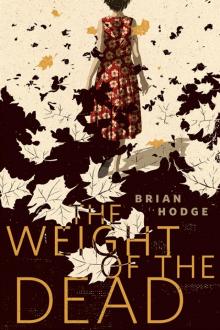 The Weight of the Dead
The Weight of the Dead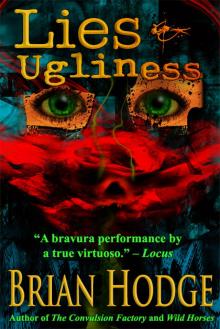 Lies & Ugliness
Lies & Ugliness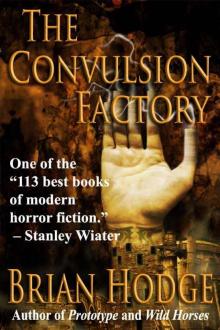 The Convulsion Factory
The Convulsion Factory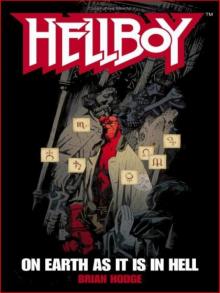 Hellboy: On Earth as It Is in Hell
Hellboy: On Earth as It Is in Hell Whom the Gods Would Destroy
Whom the Gods Would Destroy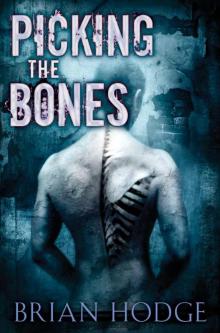 Picking the Bones
Picking the Bones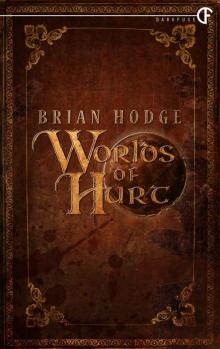 Worlds of Hurt
Worlds of Hurt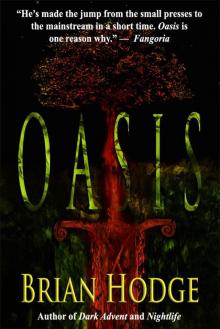 Oasis
Oasis Nightlife
Nightlife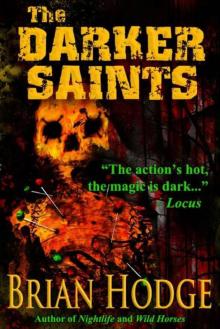 The Darker Saints
The Darker Saints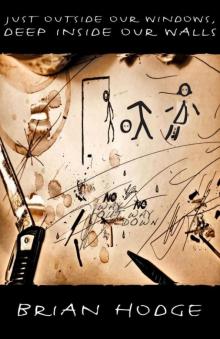 Just Outside Our Windows, Deep Inside Our Walls
Just Outside Our Windows, Deep Inside Our Walls A Haunting of Horrors, Volume 2: A Twenty-Book eBook Bundle of Horror and the Occult
A Haunting of Horrors, Volume 2: A Twenty-Book eBook Bundle of Horror and the Occult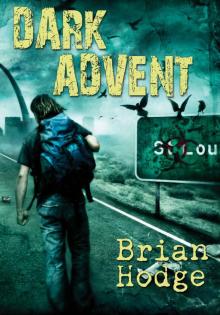 Dark Advent
Dark Advent Mad Dogs
Mad Dogs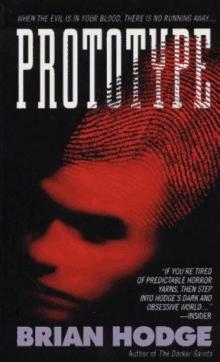 Prototype
Prototype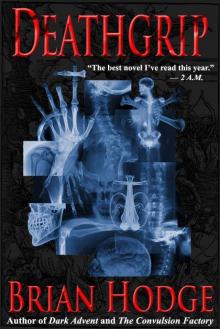 Deathgrip
Deathgrip Falling Idols
Falling Idols